This article was co-authored by Seth Hall and by wikiHow staff writer, Hannah Madden. Seth T. Hall is a Certified Life Coach and Founder of Transformational Solutions, a Los Angeles-based life-coaching company that helps people achieve their toughest goals, find their own voice, and think outside the box. He has been a life coach for over 10 years, specializing in personal development, relationships, career and finance, and wellness. He has helped his clients break the negative cycles in their lives and replace them with a positive, proactive mindset. Seth believes that everyone has the potential to live a fulfilling and rewarding life, and works passionately to help them reach their full potential. With a deep understanding of how our minds work and the power of positive thinking, he encourages his clients to find their unique paths in life and find success on their own terms. He is a certified master practitioner of Neuro-Linguistic Programming, a featured co-author for WikiHow, and co-author of "The Mountain Method”, “The Happy Tiger”, and “The V.I.S.I.O.N.S. Program”.
There are 8 references cited in this article, which can be found at the bottom of the page.
This article has been viewed 1,628 times.
Do you have a family member or a loved one with borderline personality disorder (BPD)? If so, you probably know just how delicate of a process it is to tell them “no” without hurting their feelings or triggering an episode. While saying “no” to someone without BPD might be as easy as a simple “no thank you,” rejecting someone with BPD takes a bit more tact and understanding. Keep reading to learn more about BPD and how you can do your best to decline without hurting their feelings.
Things You Should Know
- Plan out what you’re going to say in advance, and give a solid, concrete reason for why you’re saying no.
- Validate their feelings and reassure them that you still like them and care for them.
- Make alternate plans to give your loved one something to look forward to.
- Stick to your boundaries, and be patient with your loved one if they lash out at you.
Steps
Ways to Say No
-
1Practice what you’re going to say beforehand. Giving yourself a “script” to follow is a great way to stand your ground.[1] Before you tell someone no, have a rough outline of what you’re going to say in your head to make it easier on yourself.
- When you’re saying no, pick a quiet, private place to do it. It’s better to say no in person so they can read your body language and hear your tone of voice, but a phone call works, too.
-
2Offer valid reasons for saying no. While just saying “no” is a complete sentence, it can leave someone with BPD feeling confused and slighted. Give them a concrete, solid reason for telling them no so they don’t start to spiral.[2]
- “Sorry, I can’t go that day because I have a dance class that I can’t miss.”
- “I wish I could, but my son has a choir concert that night.”
- “I’m going to be out of town that weekend. I’m really sorry.”
Advertisement -
3Avoid using metaphors or euphemisms. Anything that could muddy your words or your intent might confuse your loved one. Instead, just be super clear and concise while telling them no.[3]
- Instead of “I wish I could, but I’m going to be tied up that day,” say, “I wish I could, but I have a meeting I can’t miss.”
- Instead of, “My plate’s super full right now,” say, “I have a lot of responsibilities to take care of, so I don’t have any free time.”
- Instead of going on and on, like, “I wish I could, but I have to take Hank to the dentist, and then I’m going to pilates, and then I have a book club…” stick to short answers, like, “I’m sorry, I have 3 prior engagements that day.”
-
4Reassure the person with BPD. Even after giving solid, concrete reasons for saying no, they might be feeling a bit hurt. Be sure to tell them that you saying no is not a reflection of your relationship—you still care for them and want to spend time with them in the future.[4] Offering reassurance like this might feel like overkill, but for someone with BPD, it can really help stop them from spiraling about your relationship.
- “I’m really bummed I have to miss out! I love spending time with you, so I hope we get to hang out soon.”
- “Let’s make a plan to hang out next week, okay? I’m sad I can’t see you tomorrow, and I want to catch up.”
-
5Validate their feelings. Let them know that you understand they might be upset.[5] Be sure to focus on their feelings, not their behavior—it’s totally fine to feel sad or hurt, but it’s not okay to lash out in anger.
- “I understand if you’re feeling a little bummed out. I would be too, probably.”
- “You’re upset, and I totally get it. I’m sorry that you feel that way.”
-
6Give an alternative. Provide a different suggestion so that you two can still spend time together. Not only does this make your loved one feel like you actually want to see them, but it gives you both something to look forward to. Make a concrete, solid plan so it doesn’t feel like you’re blowing them off.[6]
- “It’s not great for my asthma to walk that far. Could we pick a flatter track and walk a shorter distance? Otherwise, I won’t be able to do it, sorry.”
- “I already have a trip booked for that weekend. What about the Friday after that? I only work until 5, so we could grab dinner somewhere.”
Expert Q&A
-
QuestionHow can you get better at saying no?
 Seth HallSeth T. Hall is a Certified Life Coach and Founder of Transformational Solutions, a Los Angeles-based life-coaching company that helps people achieve their toughest goals, find their own voice, and think outside the box. He has been a life coach for over 10 years, specializing in personal development, relationships, career and finance, and wellness. He has helped his clients break the negative cycles in their lives and replace them with a positive, proactive mindset. Seth believes that everyone has the potential to live a fulfilling and rewarding life, and works passionately to help them reach their full potential. With a deep understanding of how our minds work and the power of positive thinking, he encourages his clients to find their unique paths in life and find success on their own terms. He is a certified master practitioner of Neuro-Linguistic Programming, a featured co-author for WikiHow, and co-author of "The Mountain Method”, “The Happy Tiger”, and “The V.I.S.I.O.N.S. Program”.
Seth HallSeth T. Hall is a Certified Life Coach and Founder of Transformational Solutions, a Los Angeles-based life-coaching company that helps people achieve their toughest goals, find their own voice, and think outside the box. He has been a life coach for over 10 years, specializing in personal development, relationships, career and finance, and wellness. He has helped his clients break the negative cycles in their lives and replace them with a positive, proactive mindset. Seth believes that everyone has the potential to live a fulfilling and rewarding life, and works passionately to help them reach their full potential. With a deep understanding of how our minds work and the power of positive thinking, he encourages his clients to find their unique paths in life and find success on their own terms. He is a certified master practitioner of Neuro-Linguistic Programming, a featured co-author for WikiHow, and co-author of "The Mountain Method”, “The Happy Tiger”, and “The V.I.S.I.O.N.S. Program”.
Life Coach Rehearse with different types of questions that you might want to say "no" to with a friend or significant other. During the exercise, play out how the conversation might go and how you can say "no," and what strategies you can use in the future.
Rehearse with different types of questions that you might want to say "no" to with a friend or significant other. During the exercise, play out how the conversation might go and how you can say "no," and what strategies you can use in the future. -
QuestionHow do I stop feeling bad for saying no?
 Seth HallSeth T. Hall is a Certified Life Coach and Founder of Transformational Solutions, a Los Angeles-based life-coaching company that helps people achieve their toughest goals, find their own voice, and think outside the box. He has been a life coach for over 10 years, specializing in personal development, relationships, career and finance, and wellness. He has helped his clients break the negative cycles in their lives and replace them with a positive, proactive mindset. Seth believes that everyone has the potential to live a fulfilling and rewarding life, and works passionately to help them reach their full potential. With a deep understanding of how our minds work and the power of positive thinking, he encourages his clients to find their unique paths in life and find success on their own terms. He is a certified master practitioner of Neuro-Linguistic Programming, a featured co-author for WikiHow, and co-author of "The Mountain Method”, “The Happy Tiger”, and “The V.I.S.I.O.N.S. Program”.
Seth HallSeth T. Hall is a Certified Life Coach and Founder of Transformational Solutions, a Los Angeles-based life-coaching company that helps people achieve their toughest goals, find their own voice, and think outside the box. He has been a life coach for over 10 years, specializing in personal development, relationships, career and finance, and wellness. He has helped his clients break the negative cycles in their lives and replace them with a positive, proactive mindset. Seth believes that everyone has the potential to live a fulfilling and rewarding life, and works passionately to help them reach their full potential. With a deep understanding of how our minds work and the power of positive thinking, he encourages his clients to find their unique paths in life and find success on their own terms. He is a certified master practitioner of Neuro-Linguistic Programming, a featured co-author for WikiHow, and co-author of "The Mountain Method”, “The Happy Tiger”, and “The V.I.S.I.O.N.S. Program”.
Life Coach Try to connect the idea of saying "no" with your sense of self-care and self-love. Remind yourself that you are important, and that you shouldn't have to spread yourself thin on another person's behalf.
Try to connect the idea of saying "no" with your sense of self-care and self-love. Remind yourself that you are important, and that you shouldn't have to spread yourself thin on another person's behalf.
Expert Interview
References
- ↑ https://www.psychologytoday.com/us/blog/mindful-musings/201606/3-ways-set-boundaries-and-learn-say-no
- ↑ https://psychcentral.com/lib/learning-to-say-no#how-to-say-it
- ↑ https://www.psychologytoday.com/us/blog/mindful-musings/201606/3-ways-set-boundaries-and-learn-say-no
- ↑ https://psychcentral.com/lib/learning-to-say-no#how-to-say-it
- ↑ https://www.psychologytoday.com/us/blog/the-athletes-way/202012/want-make-someone-feel-better-validate-their-feelings
- ↑ https://psychcentral.com/lib/learning-to-say-no#how-to-say-it
- ↑ https://www.helpguide.org/articles/mental-disorders/helping-someone-with-borderline-personality-disorder.htm
- ↑ https://www.helpguide.org/articles/mental-disorders/helping-someone-with-borderline-personality-disorder.htm
- ↑ https://www.helpguide.org/articles/mental-disorders/helping-someone-with-borderline-personality-disorder.htm
- ↑ https://www.helpguide.org/articles/mental-disorders/helping-someone-with-borderline-personality-disorder.htm
- ↑ https://www.nami.org/Blogs/NAMI-Blog/June-2017/Supporting-Someone-with-Borderline-Personality-Dis
- ↑ https://www.nami.org/Blogs/NAMI-Blog/June-2017/Supporting-Someone-with-Borderline-Personality-Dis
- ↑ https://www.nimh.nih.gov/health/topics/borderline-personality-disorder
- ↑ https://www.psychalive.org/fear-of-abandonment/
- ↑ https://cptsdfoundation.org/2022/08/29/the-agony-of-abandonment/
- ↑ https://www.psychalive.org/fear-of-abandonment/




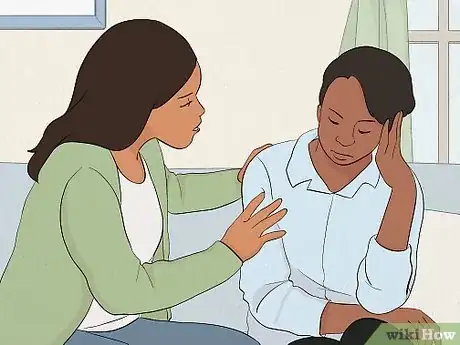



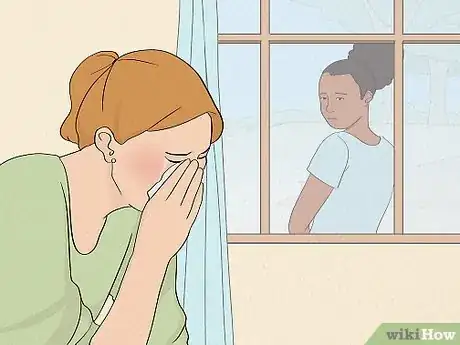




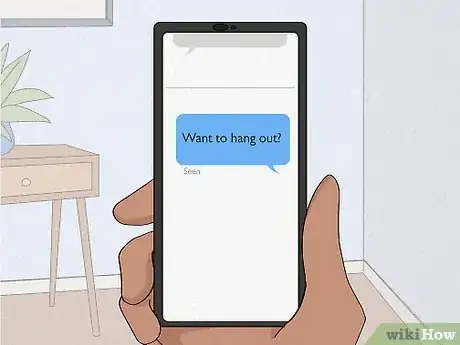







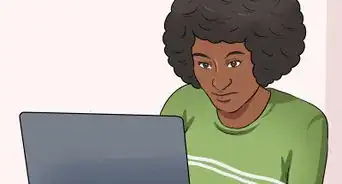
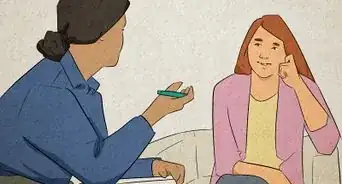

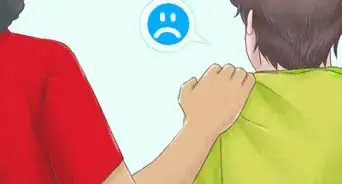




















































Medical Disclaimer
The content of this article is not intended to be a substitute for professional medical advice, examination, diagnosis, or treatment. You should always contact your doctor or other qualified healthcare professional before starting, changing, or stopping any kind of health treatment.
Read More...